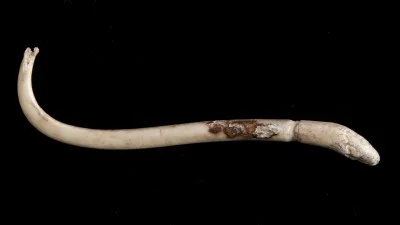Maintaining customs and community allowed Mount Vernon’s enslaved people to affirm their humanity in a world that denied it.
Music, storytelling, and religion provided an emotional outlet and carried on traditions—some from Africa and others forged in years of enslavement. In the life-altering moments of birth, illness, and death, the enslaved cared for each other and came together to celebrate and grieve.
This watercolor suggests the activities that enslaved people enjoyed during their limited "free" time, after sundown, on Sundays, and on certain holidays such as Christmas and Easter.
![Music and Dance in Beaufort County, attributed to John Rose, Beaufort County, South Carolina, probably 1785-1790 [1935.301.3] The Colonial Williamsburg Foundation. Gift of Abby Aldrich Rockefeller.](https://mtv-drupal-assets.s3.amazonaws.com/files/resources/oldplantlg.jpg?VersionId=Onx9t6.96pLRSfBISBXVkqFaHfMMefBx)
Religion
Religion offered comfort to those facing a life of bondage. Some enslaved people were Christian. They may have encountered Quakers, Baptists, and Methodists in the local area. Caesar, an enslaved field worker at Union Farm, was also a minister who preached to local black communities. Some enslaved people may have continued African religious traditions or blended a variety of spiritual beliefs into their daily lives.
Learn MoreCaesar
An advertisement was placed in a newspaper on April 14, 1798, seeking Caesar, an enslaved field worker from Union Farm who had run away. It stated that he could read, write, and “frequently” preached to other blacks in the area.
This description of Caesar as a minister provides a rare window into the religious lives of enslaved people. Though we lack the words of enslaved people, we can speculate that religion, heard through Caesar or other ministers, provided comfort as they faced the horrors of bondage.
African Origins
On plantations throughout the South, enslaved people adapted African traditions to create a new African American culture. Objects found in the excavation of the cellar of the House for Families slave quarter (used from the 1760s to 1792) reveal connections between Mount Vernon’s enslaved community and Africa.

Raccoon Baculum
This raccoon baculum (penis bone) found in the House for Families excavation is incised around one end, suggesting it may have been tied to a string and worn as a fertility charm.
Raccoon Baculum, House for Families, MVLA.

Cowrie Shells
Cowrie shells may have come to Mount Vernon via the slave trade. A species of snail native to Africa and parts of the Pacific, cowries were used for both currency and ornamentation in many African cultures. The hole in one of the shells is natural, not a purposeful modification.
Cowrie Shell, South Grove Midden, MVLA.
Music and Storytelling
Slaves sing most when they are most unhappy. The songs of the slave represent the sorrows of his heart; and he is relieved by them, only as an aching heart is relieved by its tears.
–Frederick Douglass, 1845
Music was an important part of daily life for enslaved people. Singing and dancing could continue African traditions, make work more bearable, express religious faith, and provide an outlet for sorrow, joy, and hope. Some enslaved people played instruments, like fiddles and jaw harps. They also fashioned drums and banjos out of gourds. The seeds of bottle gourds—a plant native to Africa—were excavated from a Mount Vernon slave quarter.
Storytelling provided entertainment and a way to pass vital information between generations. Martha Washington’s grandson recalled hearing an elderly enslaved man named Jack tell stories of “Africa’s climate, and of Africa’s wars, in which he was made captive…the village consigned to the flames, and he to the slave ship.” Songs and stories could also be subversive, allowing enslaved people to communicate secret messages or mock their masters.

Jaw Harp
Used in many regions of Africa, the jaw harp was a common instrument among the enslaved at Mount Vernon and other plantations. Musicians placed the rounded end of the harp at the front of their mouths and used a finger to pluck the central vibrating tongue (missing from this example).
Jaw Harp, Wifi Project Excavation, MVLA.
Slave Cemetery
Despite the volumes of papers and letters that George Washington kept in his lifetime, very little is known about the history of the sacred wooded area thought to be the resting place for dozens of African Americans. In 2014, archaeologists at Mount Vernon embarked on a multi-year archaeological survey of the site in an effort to learn more about this space. Much work remains to be done in the Slave Cemetery before we can understand precisely how many individuals call this spot their final resting place, and where exactly in the burial ground they are located. However, this important project has already taught us much about the use of this space at Mount Vernon.
Learn More
The content on this page was adapted from Lives Bound Together: Slavery at George Washington’s Mount Vernon, an exhibition on view in the Donald W. Reynolds Museum & Education Center from 2016–2020.

